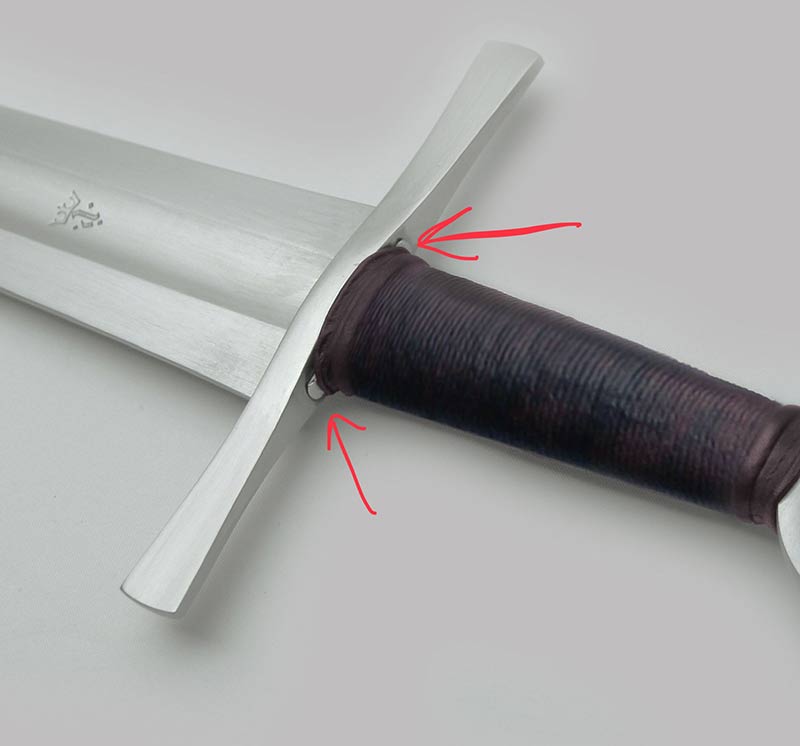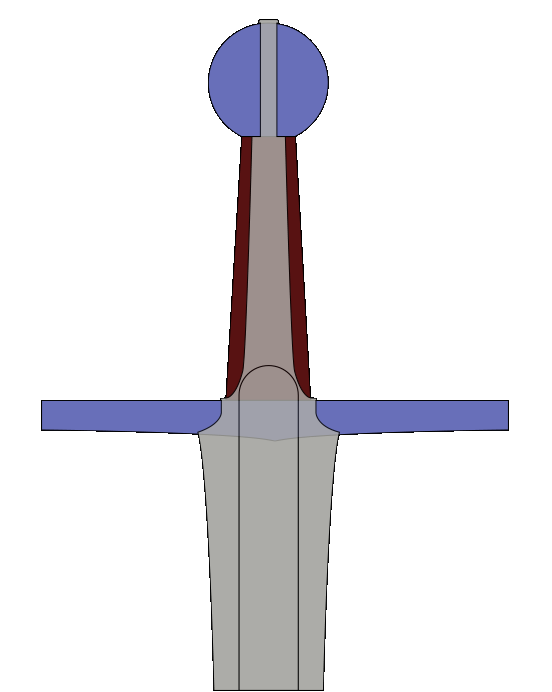Page 1 of 1
Albion I.33 practice sword- what’s going on here?
Posted: Mon Aug 31, 2020 7:00 pm
by caedmon
Hey, just looking at the Albion Royal Armoury’s I.33 practice sword,
https://www.albion-swords.com/ROYAL%20A ... 20I33.html, and saw something odd at the bottom of the cross guard.
What’s with the metal bits below the guard? If it’s a bit of the blade; doesn’t that make a really bad stresspoint?

- albion.jpg (28.08 KiB) Viewed 8374 times
Re: Albion I.33 practice sword- what’s going on here?
Posted: Tue Sep 01, 2020 1:30 pm
by Odigan
It's part of a secondary step in the tang peened over the backside of the guard. All of Albion's Maestro line are constructed this way, to minimize loosening of the guard from repeated strikes.
Of the thousands of Maestros I've seen I don't recall any blades that failed at this junction.
Re: Albion I.33 practice sword- what’s going on here?
Posted: Tue Sep 01, 2020 6:20 pm
by caedmon
So the tang would be something like this?

- blade_profile.png (10.54 KiB) Viewed 8328 times
I can see why that would keep the sword fittings tight.
This is completely new to me. (Not that I could ever be considered an expert) Is this common for higher end blades? And/or attested in the archaeological record?
Re: Albion I.33 practice sword- what’s going on here?
Posted: Wed Sep 02, 2020 1:19 am
by Peter Remling
Not common even in higher end swords. I didn't see anything in the historic record but I took a real quick look so I easily could have missed something. Only a few of the Albion models have this type and those appear to be ones where there'd be excessive torque applied to them. Your schematic is a little off as your fuller terminates too far past the guard. Most fullers terminate either before the guard or under it.
Re: Albion I.33 practice sword- what’s going on here?
Posted: Wed Sep 02, 2020 2:38 pm
by Odigan
That's the idea, yes, though the peens are much more substantial. Too thin and they'll deform or crack right off, so proper technique is required for this construction to be successful, making sure the peen is not worked cold nor left overly hard. Loss of some hardness in this area of the blade isn't a problem and may beneficial - there's plenty of material there that one doesn't need worry about bending.
While some other makers have used this method besides Albion, so far as I know it was not used historically. Messers often have a similar blade/guard junction, but it is secured by the nagel, not a peen on the shoulders. This is something that is peculiar to the Maestro line and similarly intentioned blades which are designed to take repeated hard strikes to the guard with regularity while asking for little maintenance in return. Neither circumstance being an expectation in historical swords.
Re: Albion I.33 practice sword- what’s going on here?
Posted: Fri Sep 04, 2020 2:10 pm
by RangerofAngmar
i dont have an example on hand, but i have heard of a few historic swords having the guard peened to the tang and of the tang being peened to the guard.
also regarding messers, quite a few have the guard come down via the blade and held in place by the nagal, and others are 2 piece constructions that are riveted to the tang along with the nagal.
Re: Albion I.33 practice sword- what’s going on here?
Posted: Wed Sep 09, 2020 2:10 am
by theowl
My liechtenauer has the same thing. If I remember correctly there's a video out there showing that step in the process when building one of the maestro line swords, but I have no idea where it would be.